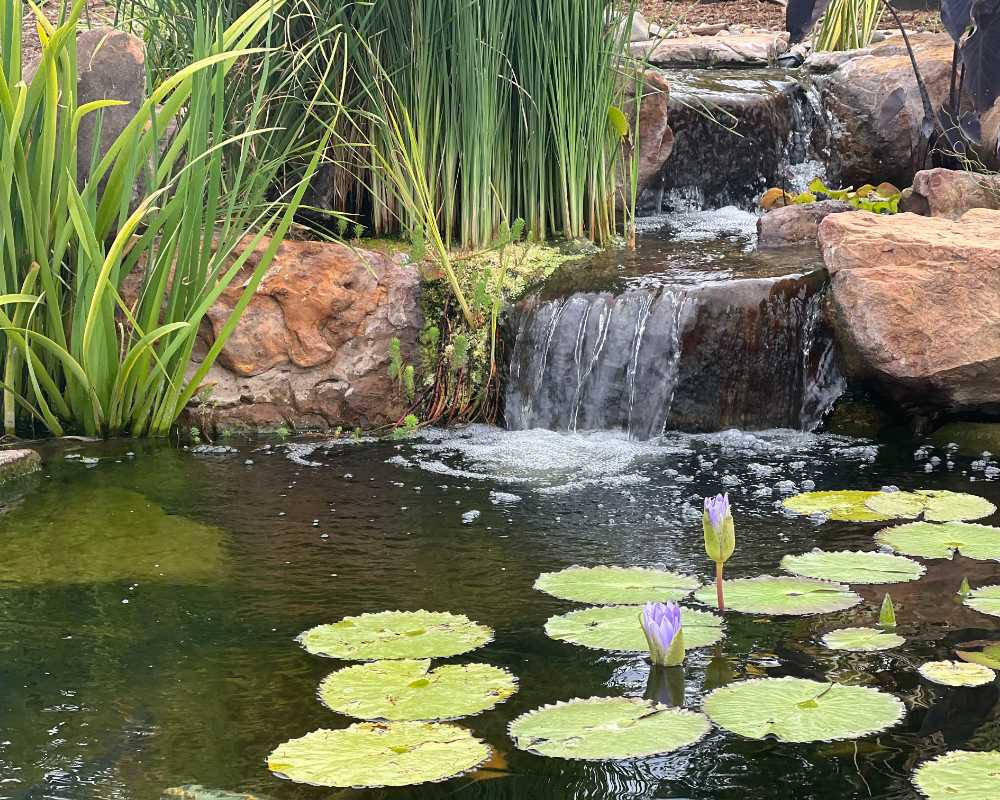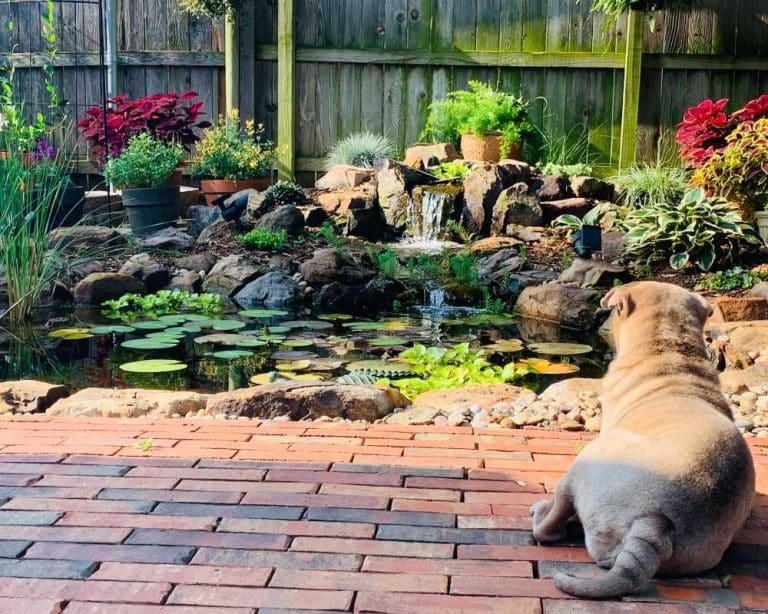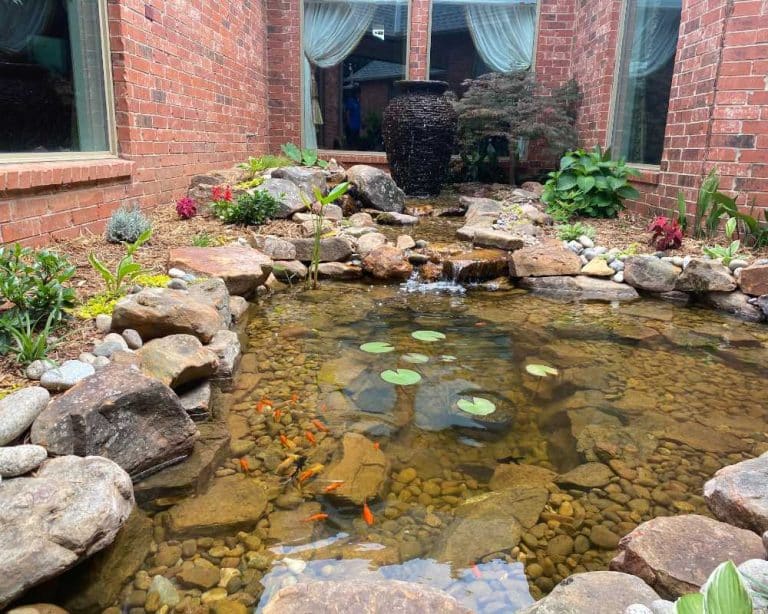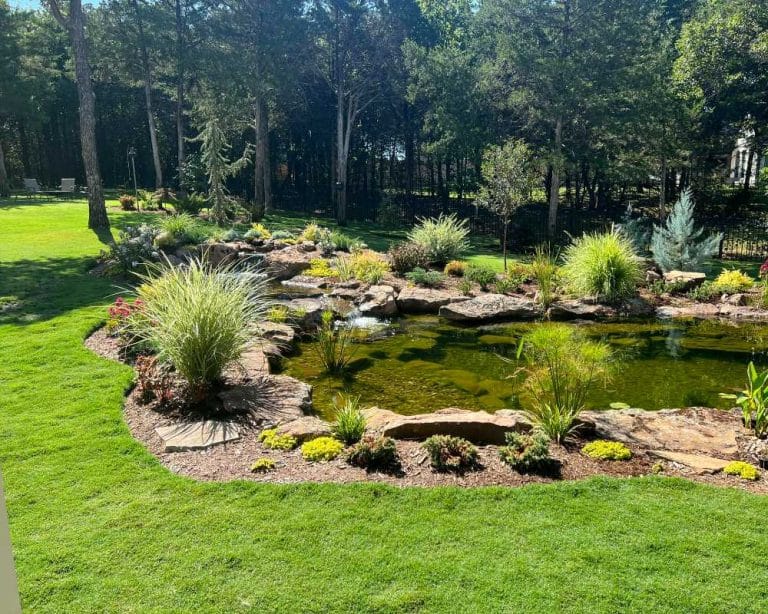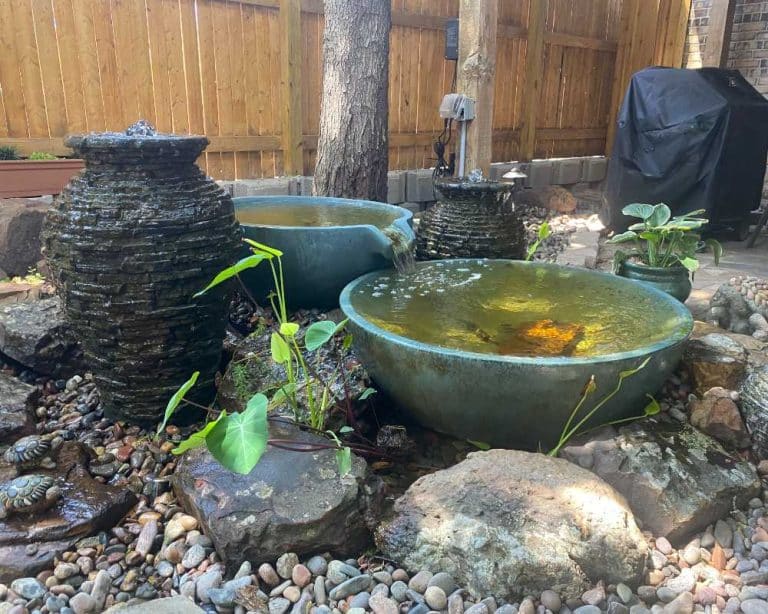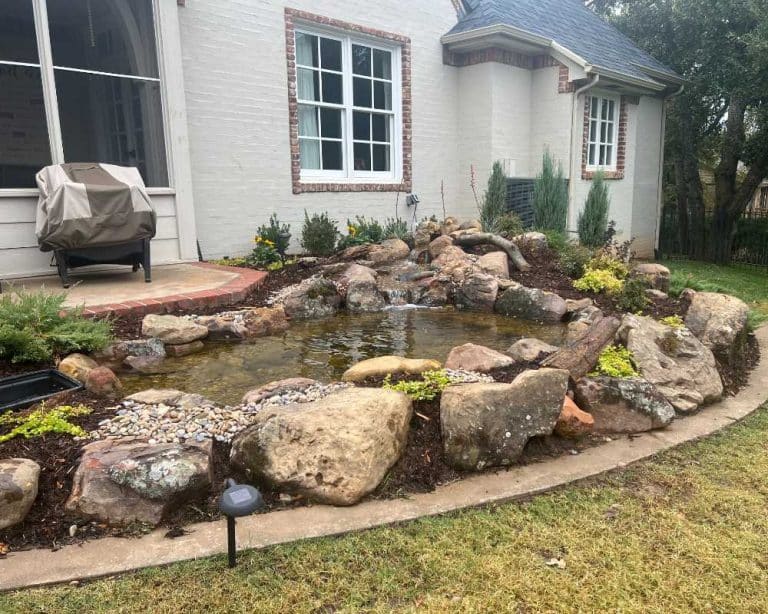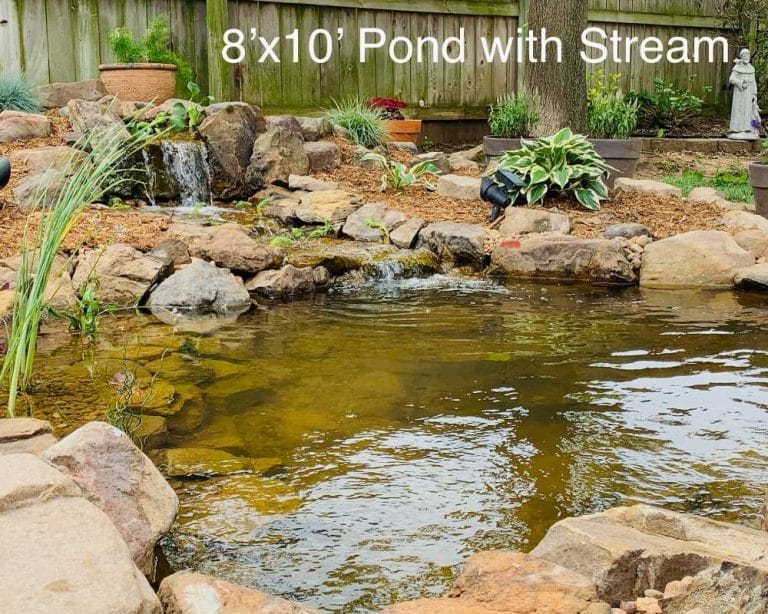How to remove algae from your pond (without killing your fish!)
Algae is an informal term for a class of aquatic plants which have no stem, roots, or leaves. Some live in freshwater, others in the ocean; some are enormous, some have only a single cell. All are green, and like all plants, they use chlorophyll and sunlight in the process of photosynthesis to create their own food.
If you find algae in your pond, they are most likely microscopic, floating in the water, turning it a pea green color. It can also grow on rocks or logs at or below the surface. If you leave it alone, it will continue to grow until it covers all of your pond’s features and turns the water into murky pea soup. Eventually it will even cover the surface of the water.
How to Remove Algae
How you remove algae from your pond depends on a number of factors: The size of your pond, the extent of the infestation, and the shape of the floor. For example, if your pond has a round basin like a swimming pool, then a pond vacuum and brush will be effective in eliminating the algae attached to your pond’s features. If your pond has a floor of rocks and dirt, that operation will be significantly more complicated.
This page will explain the algae removal process in two respects: Maintenance and Restoration. If your algae problem is mild to moderate, then some basic maintenance may be sufficient. But if your algae problem is advanced, or if your pond is designed in such a way that maintenance is impractical, then you may need to redesign and reinstall it.
Professional Koi Pond Installation in Oklahoma
Getting a professionally installed Koi pond in your home is only a short phone call away. At Oklahoma Ponds, we have over 30 years of koi pond installation expertise in the great state of Oklahoma. We are Oklahoma City’s fastest growing pond contractor, and that is not by accident. We strive to be the leader in all things garden ponds and water features. Every service we offer comes with a 100% satisfaction guarantee. Why choose us?
Specialized Company
We specialize in the care and construction of garden koi ponds. This allows us to stay up to date with the latest technology and advances in our industry
Dependable Services
Each of our technicians are thoroughly trained in the care and construction of garden ponds and water features. All of our services come with a 100% satisfaction guarantee!
Reputable Company
Every service comes with our 100% satisfaction guarantee. Our company’s reputation is impeccable, just take a look at our Google Reviews.
Strategy 1 – Pond Maintenance
Pond maintenance is essential for minimizing algae growth. There are a number of different tasks you can perform to cut down on the presence of algae. The more often you do them, the more consistently your water will be clear.
Debris Removal
Debris such as twigs, leaves, or other organic material can fall into your pond and float on or near the surface. These items will break down over time, adding nutrients to the water which can facilitate algae growth. With a skimmer brush or a rake, you can collect these items and keep your pond clear. If they remain in your pond a long time, they can break down and crumble.
Vacuuming and Brushing your Pond
When you had your pond installed, you likely purchased these basic tools for routine cleaning. In most cases, they will be able to scour the surfaces of rocks and logs to remove scum and organic matter growing on them. Doing this will remove organic material that algae feeds on, and algae itself. Whether you have algae or not, this step will have a huge impact on your visual presentation.
Water Replacement, Circulation, and Filtration
Your water pump is an effective weapon for algae maintenance, because it keeps the water moving. Algae grows best when water is stagnant, so a good pump that keeps your water flowing is critical. You’ll also want to keep your filter in good condition, as it will catch all but the smallest algae.
If you have completed these first three steps, and still have significant discoloration, replacing 25% of the water with fresh water can make a big difference. If you have fish, just make sure you treat the new water with a dechlorinator before adding it.
Beneficial Bacteria – Commercial vs. Natural
Beneficial bacteria feeds on the nutrients algae use to grow, and by having it in your pond, you can see a gradual reduction of algae. Many companies promote a series of “beneficial bacteria” products, making the claim that by raising the level of such microbes in your water, you can reduce or eliminate algae in your pond.
There are several problems with this theory. First, the product you buy actually has to contain living bacteria. If it does not, you are wasting your money. Second, your pond already contains beneficial bacteria growing in the scum on the rocks at the bottom. Those bacteria will do just as good a job as – if not better than – commercial bacteria. After all, the natural bacteria is native to your pond, and already thriving there.
The best way to use bacteria in your pond is to let it grow there. While it is true that the bacteria will eventually die and become food for more bacteria, it will consume much of the nutrients present in the water, and thus impede the growth of algae. Of course, if you routinely remove the bacteria from the bottom of your pond through regular maintenance, there may be some benefit to adding commercial bacteria. See the next section on pond design for more information about bacteria.
Strategy 2 – Pond Design/Redesign
Most people who love their pond don’t want to hear about reinstalling it. And a proper discussion of pond construction is beyond the scope of this page. However, there are some principles one should keep in mind if you are serious about eliminating algae from your pond that can only be addressed during construction. Maintenance can’t solve all of your problems.
Floor Design and Surface Area
One of the best ways to remove algae is to remove all of the organic material it feeds on. This requires regular maintenance, in the form of cleaning the rocks/floor at the bottom. If the pond is designed in such a manner that this is impractical, then it may be worth taking a day or two to drain and rebuild it.
Surface area also plays a key role in the growth of beneficial bacteria. The more small rocks at the bottom, the more surface area there is for bacteria to grow on. Bio Balls are a significant tool you can place in your pond for increasing the surface area available to beneficial bacteria. One 1.5” bio ball has as much surface area as 2 square feet, so adding a few should make a difference in reducing algae.
Ultraviolet Filters
When installing your pond, consider which pump and filter will work best for reducing or eliminating algae. If you install an ultraviolet filter, you will kill all the algae that passes through it, as well as the beneficial bacteria. Keep in mind, the ultraviolet radiation won’t remove the material from the water, it will simply kill it. That’s why pond owners should add it during a restoration, as a preventative measure.
The Benefits and Myths of Barley
Without going into a detailed explanation, if you intend to use barley as a way of deterring algae growth, do it after you have already cleaned the pond, as a preventative measure. Barley does not kill or remove algae; rather it creates an environment suitable for the growth of certain phytoplanktons that feed on certain species of algae. In other words, barley will not prevent the growth of every kind of algae.
Barley should always be used in extract form. Natural barley takes forever to decompose, and like the organic material you must remove from your pond during regular maintenance, it can and will break down into compost that will feed bacteria and yes – algae. Barley extract does not need to break down, but already exists in a form that impedes the growth of (some) algae. You can use it in cold or warm water.
The Importance of Free Floating Aquatic Plants
Certain floating aquatic plants are useful for limiting the sun’s ability to reach below the surface, thus inhibiting algae growth. The more of them you use, the more surface area is covered. Water lilies, lotuses, cattails, and duckweed are some examples of common aquatic plants that can thrive in most climates.
Final Tips
With any product you purchase for pond maintenance, make sure you ask questions as to its proper use, and follow the instructions carefully. If you do not, you may be sorry. For example, if you intend to dump an algicide into your pond, have a solid understanding of how it will affect the chemistry of the water and the ecosystem. If you have fish, make sure they will be just fine with it.
There are many natural products that can help limit algae. But you needn’t be overwhelmed. Reach out to the professionals at Oklahoma Ponds, and we will answer all your questions, and recommend the best products for whatever your goal is. Your backyard is your sanctuary. We want your pond to bring you the joy and comfort you deserve.

